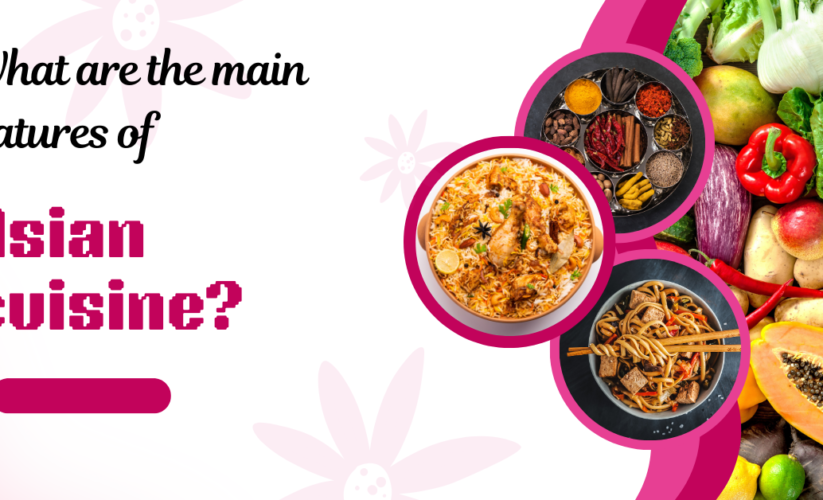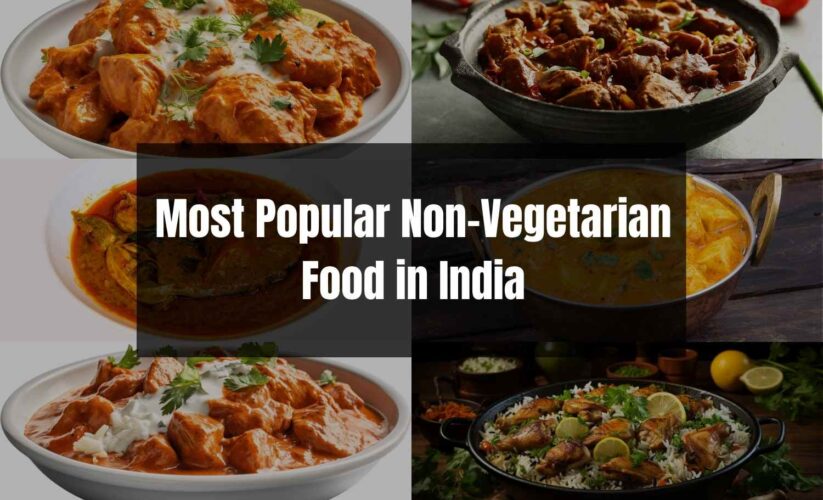
What are the main features of Asian cuisine?
Asian cuisine is a vast and diverse culinary landscape, characterized by its rich tapestry of flavors, textures, and ingredients. From the fiery spices of Southeast Asia to the delicate balance of tastes in Japanese dishes, Asian food offers an unparalleled sensory experience. With a strong emphasis on fresh produce, aromatic herbs, and unique cooking techniques, Asian cuisines have captivated palates worldwide and continue to inspire culinary innovation. Moreover, if you try an abundance of Asian cuisine at home, don’t worry about this matter. We at Chef Cooking Resort offer a list of recipes of Asian cuisine.
Let’s delve into the main features of Asian cuisine below:
Emphasis on Fresh Ingredients
A cornerstone of Asian cuisine is its unwavering emphasis on fresh ingredients. This commitment to quality and flavor is evident in every dish, from the bustling street food stalls to the refined dining establishments. The vibrant colors and intoxicating aromas that characterize Asian cuisine are a direct result of using the freshest produce, meats, and seafood available. Whether it’s the crisp, verdant vegetables of Southeast Asia, the delicate sushi-grade fish of Japan, or the fragrant herbs and spices of India, the focus on freshness is paramount.
This dedication to sourcing the best ingredients not only enhances the taste but also aligns with many Asian cultures’ reverence for nature and the importance of seasonal eating. By prioritizing fresh produce, Asian cuisine celebrates the bounty of the earth and offers a truly authentic and flavorful experience.
Diverse Flavor Profiles
Diverse Flavor Profiles are a hallmark of Asian cuisine. The continent’s vast expanse and diverse cultures have given rise to a myriad of taste experiences. From the fiery, bold flavors of Thai cuisine, characterized by a perfect balance of sweet, sour, salty, and spicy, to the delicate and umami-rich notes of Japanese dishes, there’s an incredible range to explore. Chinese cuisine showcases a spectrum from the spicy Sichuan flavors to the subtle elegance of Cantonese dishes. Indian cuisine is famous for its complex blend of spices, creating dishes that are both comforting and exhilarating. Southeast Asian nations offer a symphony of tastes, with the use of fresh herbs, coconut milk, and citrus creating vibrant and refreshing flavors. These diverse flavor profiles, shaped by geography, history, and local ingredients, make Asian cuisine a captivating/endlessly fascinating culinary journey.
Rice and Noodles as Staples
Noodles and rice are undeniably the cornerstones of Asian cuisine, providing a versatile base for a myriad of flavors and textures. Rice, a staple across most of Asia, is cultivated in diverse varieties, each with its unique characteristics. From the fragrant jasmine rice of Thailand to the sticky Japanese sushi rice, this grain offers a neutral canvas for bold flavors. It serves as a comforting accompaniment to stir-fries, curries, and soups, or takes center stage in dishes like biryani and congee.
Noodles, on the other hand, exhibit an astonishing range of forms and textures. Wheat-based noodles like ramen, udon, and lo mein are popular in East Asia, while rice noodles find their home in Southeast Asian cuisines. These elongated strands are perfect for slurping, soaking up savory broths, or stir-frying with an array of ingredients. Whether it’s the delicate rice noodles in a Thai pad thai or the hearty wheat noodles in a Japanese ramen, these versatile components have become synonymous with Asian cuisine, offering endless possibilities for culinary exploration.
Bold Use of Spices and Herbs
A hallmark of Asian cuisine is its bold and imaginative use of spices and herbs. These aromatic components are the soul of many Asian dishes, imparting complex flavors that tantalize the taste buds. From the fiery chili peppers of Southeast Asia to the delicate cardamom and cumin of India, the spice palette is vast and varied. These ingredients are often used in intricate combinations to create unique flavor profiles, balancing heat, sweetness, sourness, and saltiness.
Additionally, the art of spice blending has been perfected over centuries, resulting in signature spice mixes like garam masala, five-spice powder, and curry powder. The skillful application of these aromatic treasures elevates ordinary ingredients to extraordinary heights, making Asian cuisine a truly unforgettable culinary experience.
Cooking Techniques
Cooking techniques are a cornerstone of Asian cuisine, shaping the unique flavors and textures that define the region’s culinary diversity. Stir-frying, a hallmark of Chinese cuisine, involves rapidly cooking ingredients over high heat in a wok, preserving their crispness and vibrant colors. Steaming, prevalent in Southeast Asian and Chinese cooking, is a gentle method that retains nutrients and produces delicate flavors. Grilling and barbecuing are also widely employed, imparting smoky undertones to meats and vegetables.
Deep-frying, though used judiciously, creates crispy exteriors and tender interiors in dishes like tempura and spring rolls. Fermentation, a traditional technique, transforms ingredients like soybeans into soy sauce, miso, and kimchi, adding depth and complexity to flavors. These diverse cooking methods, combined with the judicious use of heat and time, contribute significantly to the rich and varied tapestry of Asian cuisine.
Balance and Harmony
Balance and harmony are fundamental principles underpinning Asian cuisine. This philosophy is evident in the meticulous attention paid to the interplay of flavors, textures, and colors on the plate. From the subtle balance of sweet, sour, salty, and bitter in Thai dishes to the harmonious combination of umami, acidity, and sweetness in Japanese cuisine, the pursuit of equilibrium is paramount. The careful selection and proportioning of ingredients, coupled with precise cooking techniques, create dishes that are not only delicious but also visually appealing. This emphasis on balance extends beyond taste to encompass the overall dining experience, where the presentation of food and the ambiance of the meal contribute to a sense of harmony and well-being.
Moreover, the concept of yin and yang, prevalent in many Asian cultures, finds expression in culinary practices. The interplay of contrasting elements—hot and cold, soft and crunchy, light and heavy—is seen as essential for creating a complete and satisfying meal. This holistic approach to food reflects the belief in the interconnectedness of all things and the importance of maintaining balance in one’s life.
Regional Variations: Asian cuisine
While these characteristics provide a general overview, it’s important to note that Asian cuisine is incredibly diverse. Each region offers its own unique culinary traditions.
East Asia
East Asian cuisine is famous for its emphasis on fresh, high-quality ingredients, delicate flavors, and meticulous presentation. Countries like China, Japan, Korea, and Mongolia have developed distinct culinary traditions shaped by their geography, history, and philosophy. A cornerstone of East Asian diets is rice, often accompanied by a variety of side dishes.
Chinese cuisine boasts an immense repertoire, from the spicy Sichuan flavors to the delicate Cantonese dim sum. Japanese cuisine celebrates simplicity and seasonality, with sushi, ramen, and tempura being global icons. Korean food is characterized by its bold flavors, often incorporating fermented ingredients like kimchi. Meanwhile, Mongolian cuisine is hearty and meat-centric, reflecting the nomadic lifestyle of its people. Together, these culinary traditions showcase the region’s rich cultural heritage and offer a diverse range of gastronomic experiences.
Southeast Asia
Southeast Asian cuisine is a vibrant tapestry of flavors that reflects the region’s diverse cultural heritage. Characterized by its bold and complex taste profiles, it is a harmonious blend of sweet, sour, salty, and spicy elements. Fresh herbs and aromatics, such as lemongrass, galangal, and kaffir lime leaves, infuse dishes with their distinctive fragrances, while chili peppers add a fiery kick. Rice is a staple, often served alongside stir-fries, curries, and noodle dishes. The cuisine’s emphasis on balance and harmony is evident in the careful selection of ingredients and cooking techniques.
From the fiery curries of Thailand to the rich flavors of Indonesian dishes, Southeast Asian cuisine offers a tantalizing exploration for food enthusiasts. The region’s proximity to the sea has also influenced its culinary landscape, with an abundance of fresh seafood incorporated into many dishes. Whether it’s the fragrant laksa of Malaysia or the spicy pho of Vietnam, Southeast Asian cuisine continues to captivate taste buds worldwide.
South Asia
South Asian cuisine is a vibrant and complex tapestry woven from centuries of cultural exchange and culinary innovation. Characterized by its bold flavors, rich use of spices, and an emphasis on fresh ingredients, it has captured the hearts and palates of food enthusiasts worldwide. The subcontinent’s diverse geography and climate have given rise to a wide range of culinary traditions, from the fiery curries of the south to the aromatic biryanis of the north. Rice, lentils, and whole wheat flour form the foundation of many South Asian diets, while an abundance of fresh herbs, vegetables, and fruits provide a colorful and flavorful palette. The cuisine’s intricate balance of sweet, sour, salty, and spicy flavors creates a truly unforgettable dining experience.
Whether it’s the comforting warmth of a bowl of dal or the celebratory feast of a biryani, South Asian food is deeply intertwined with the region’s cultural and social fabric. The shared love for food and hospitality is evident in every meal, making it a truly enriching and unforgettable culinary journey.
West Asia
West Asian cuisine, often referred to as Middle Eastern cuisine, is a distinct branch of Asian gastronomy with its own unique characteristics. While sharing some commonalities with other Asian regions, such as the use of rice and spices, West Asian cuisine has developed a distinctive flavor profile shaped by its geography, history, and cultural influences. A cornerstone of the region’s diet is the versatile and ubiquitous pita bread, which serves as a vessel for a variety of fillings and dips.
The cuisine places a strong emphasis on grilled meats, particularly lamb and chicken, often marinated in a blend of aromatic spices and herbs. Grains like bulgur and couscous are staples, while legumes such as chickpeas and lentils are essential ingredients in many dishes. The liberal use of olive oil, fresh herbs like mint and parsley, and spices such as cumin, coriander, and cardamom creates a harmonious balance of flavors. Sweet treats like baklava and halva are also integral to the culinary heritage of the region, showcasing its rich and decadent side.
The Influence of Asian Cuisine on the World
Asian cuisine has undeniably left an indelible mark on the global culinary landscape. Its influence extends far beyond the continent’s borders, shaping tastes, preferences, and cooking techniques worldwide. From the introduction of essential ingredients like soy sauce, rice, and noodles to the popularization of cooking methods such as stir-frying and steaming, Asian cuisine has revolutionized how people eat. The emphasis on fresh, seasonal ingredients and the harmonious balance of flavors have inspired chefs and home cooks alike to explore new culinary horizons. Moreover, Asian food has played a pivotal role in fostering cultural exchange and understanding, as people from different backgrounds come together to appreciate the diverse and complex flavors of this region.
Conclusion
In conclusion, Asian cuisine is a vast and multifaceted culinary tapestry characterized by its bold flavors, diverse ingredients, and intricate cooking techniques. With a strong emphasis on freshness, balance, and harmony, Asian food offers a truly unique and satisfying experience. From the fiery spices of Southeast Asia to the delicate umami notes of Japanese cuisine, the culinary traditions of Asia continue to inspire and delight food lovers around the world.
Also, unveil a treasure trove of informative and useful content on Chef Cooking Resort Blogs, where knowledge meets inspiration




